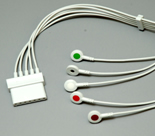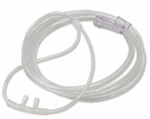What is a Sleep Study?
There are no needles and no pain! All electrodes are placed on your child using tape or a sticky paste.
A sleep study or polysomnogram measures the quality of a person's sleep. This laboratory test is extremely valuable for diagnosing and treating many sleep disorders, including neurological disorders, movement disorders, and breathing disorders at night.
For studying the quality of sleep, small electrodes (small round metal discs) are applied to your child's scalp, on both sides of your child's head, and under your child's chin. This lets us measure your child's brain waves, eye movements, and muscle tone.
Brain Waves

By measuring your child's brain waves it is possible to determine what stage of sleep your child is in. Stages of sleep include light sleep, deep sleep, and the type of sleep that you dream in, also known as REM (Rapid Eye Movement) sleep.
Eye Movements
By measuring your child's eye movements (one electrode placed on both sides of your child's head) it is possible to determine if your child's eyes are moving fast or slow. Eye movements are also used to determine what stage of sleep your child is in.
Muscle Tone
By measuring your child's muscle tone (two electrodes placed under your child's chin) it is possible to determine how relaxed your child's muscles are.
Heart Rate

Your child's heart rate will be monitored during the entire sleep study using an EKG (electrocardiogram) monitor. The EKG leads are big stickers with a snap on the front side. The EKG cables are snapped onto the EKG cables.
Breathing Movements
Two stretchy elastic bands/belts are placed around your child's chest and abdomen. These stretchy belts look very similar to wide elastic that can be found in a fabric/craft store. These stretchy belts measure your child's breathing movements. When your child is breathing normally their chest and abdomen move in and out together.
Measuring Airflow

A sensor is placed under your child's nose that measures airflow. This sensor is called a capnograph. The sensor is very similar to a nasal cannula that people wear when they need oxygen. During the sleep study we are not giving your child extra oxygen or air to breathe. Instead we are measuring what your child is breathing out (their carbon dioxide levels).
Oxygen Levels
An oxygen sensor is placed on your child's toe or finger that measures blood oxygen levels. This sensor is very similar to wearing a Band-Aid. This sensor has a tiny red light.
Arm and Legs Movements
It is also important to monitor your child's arm and leg movements. We can measure your child's arm and leg movements using an EMG (electromyography) monitor. These EMG leads are very similar to the EKG leads. The EMG leads are big stickers with a snap on the front side. The EMG cables are snapped onto the EMG cables.
Watching Your Child Sleep
To help us understand your child's sleeping activities better, your child is videotaped while asleep.
Will The Sensor Devices Or Tests Hurt?
No! This is a painless and non-invasive (no needles) testing procedure.